Table of Contents
The UNESCO Sites in United States of America have resulted from recognizing 24 cultural and natural landmarks as UNESCO World Heritage Sites in United States of America and 19 locations on the United States of America UNESCO tentative list. These tourist sites in United States of America are acknowledged for their unique and valuable cultural, natural, artistic, and historical significance and are preserved for future generations.
In addition to the 24 sites on the United States of America UNESCO list, there are many other places to travel to the United States of America that are being considered for UNESCO recognition. These sites, listed on the tentative list, showcase the rich cultural heritage of the country and are waiting for approval to join the prestigious and famous World Heritage Sites list.
To help visitors discover these remarkable United States of America tourist attractions, we have assembled an interactive map of the UNESCO sites in United States of America.
United States of America UNESCO Map
Click markers to show information and photo.
World Heritage Sites in United States of America
UNESCO World Heritage Sites in the United States of America
There is 24 UNESCO World Heritage Site in the United States of America. All of these three sites are listed under the Cultural category.
- Cahokia Mounds State Historic Site
- Chaco Culture
- Independence Hall
- La Fortaleza and San Juan National Historic Site in Puerto Rico
- Mesa Verde National Park
- Monticello and the University of Virginia in Charlottesville
- Monumental Earthworks of Poverty Point
- San Antonio Missions
- Statue of Liberty
- Taos Pueblo
- The 20th-Century Architecture of Frank Lloyd Wright
- Carlsbad Caverns National Park
- Everglades National Park
- Grand Canyon National Park
- Great Smoky Mountains National Park
- Hawaii Volcanoes National Park
- Kluane / Wrangell-St. Elias / Glacier Bay / Tatshenshini-Alsek
- Mammoth Cave National Park
- Olympic National Park
- Redwood National and State Parks
- Waterton Glacier International Peace Park
- Yellowstone National Park
- Yosemite National Park
- Papahānaumokuākea
UNESCO World Heritage Sites in United States of America are protected locations for their cultural and natural importance.
Cahokia Mounds State Historic Site
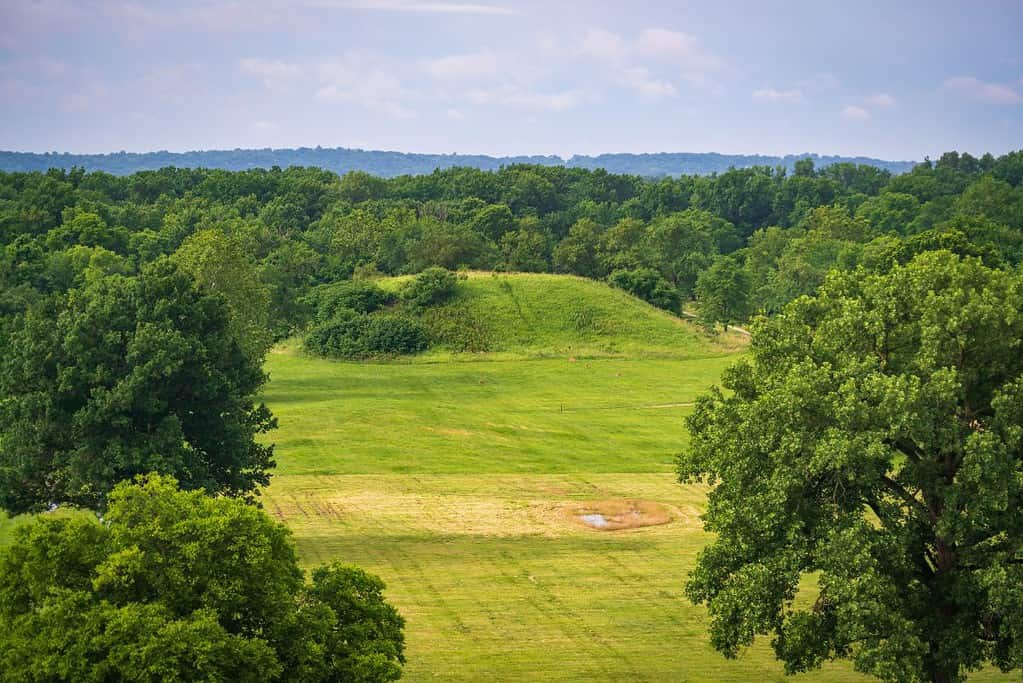
Cahokia Mounds State Historic Site is a UNESCO World Heritage Site in Illinois, United States. It showcases the remains of the ancient city of Cahokia, which was once the largest pre-Columbian settlement north of Mexico. The site features a vast complex of earthen mounds and structures, including Monks Mound, the largest prehistoric earthen structure in the Americas. These mounds offer insights into the cultural, social, and economic life of the Mississippian people who inhabited the region over a thousand years ago. As an important archaeological site, Cahokia Mounds State Historic Site serves as a testament to the rich history and achievements of indigenous civilizations in North America.
Chaco Culture

Chaco Culture is a UNESCO World Heritage Site in the southwestern United States, specifically in northwestern New Mexico. This remarkable site showcases the remains of an ancient Puebloan culture that thrived between the 9th and 13th centuries. The Chaco Canyon, the heart of this cultural landscape, features monumental structures, including impressive multi-story stone buildings known as great houses. These architectural marvels were meticulously planned and aligned with celestial events, showcasing the advanced knowledge and engineering skills of the Chacoans. The site provides a unique glimpse into this pre-Columbian civilization’s spiritual, social, and economic practices, leaving visitors in awe of its historical significance and cultural legacy.
Independence Hall

Independence Hall, a UNESCO World Heritage Site, is in Philadelphia, Pennsylvania, United States. It holds immense historical significance as the birthplace of the United States of America. This iconic building served as the meeting place for the Second Continental Congress, where the Declaration of Independence was adopted on July 4, 1776. Additionally, it is where the United States Constitution was drafted and signed in 1787. The architectural beauty of Independence Hall reflects the Georgian style of the 18th century, making it a cherished landmark and a symbol of American democracy and freedom. Visitors can explore the Assembly Room, where historic events unfolded, and better understand the nation’s founding principles and the remarkable legacy that Independence Hall represents.
La Fortaleza and San Juan National Historic Site in Puerto Rico

La Fortaleza and San Juan National Historic Site in Puerto Rico is a UNESCO World Heritage Site of great cultural significance. Located in the heart of Old San Juan, it is a testament to the region’s rich history and architectural grandeur. La Fortaleza, the iconic fortress, stands as the oldest executive mansion still in use in the Americas, serving as the residence of the Governor of Puerto Rico. The site also includes the impressive San Juan National Historic Site, featuring well-preserved fortifications, such as El Morro and Castillo de San Cristobal, which once defended the city against invasions. These historical landmarks offer visitors a captivating journey through Puerto Rico’s colonial past and showcase the island’s enduring heritage.
Mesa Verde National Park
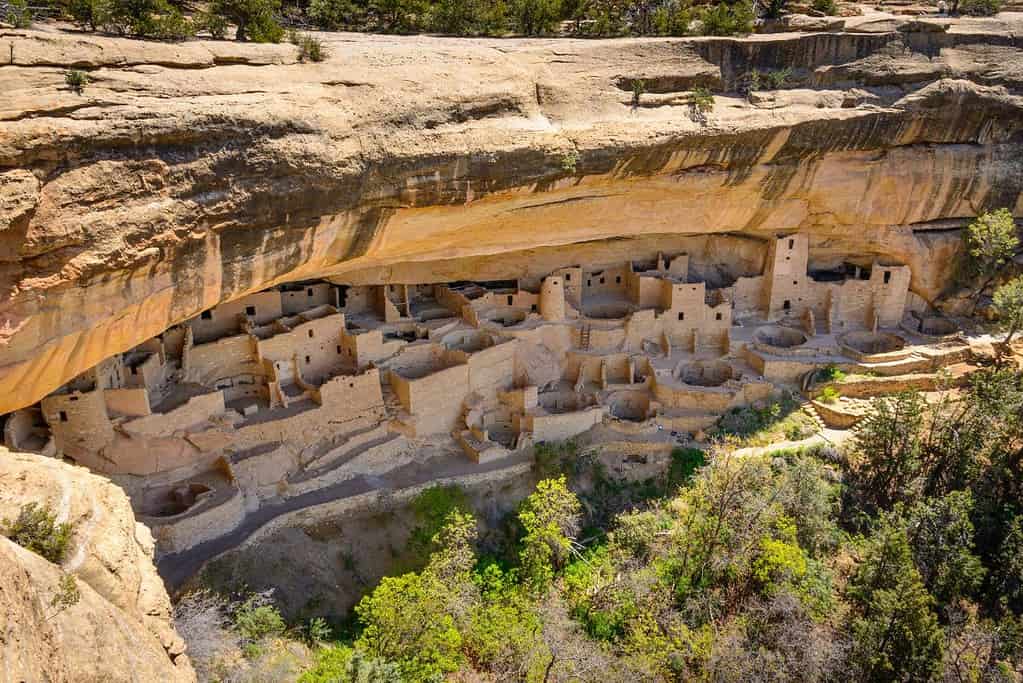
Mesa Verde National Park, a UNESCO World Heritage Site in southwestern Colorado, is an extraordinary testament to the ancient Puebloan civilization. Nestled amidst the stunning cliffs and canyons, the park preserves and showcases the incredible cliff dwellings and structures built by the Ancestral Pueblo people over 700 years ago. These remarkable stone villages, such as the renowned Cliff Palace and Balcony House, provide a glimpse into the region’s rich cultural and architectural heritage. Exploring Mesa Verde National Park allows visitors to connect with the ingenuity and resilience of the Puebloan people, offering a captivating journey through history and a deep appreciation for their remarkable achievements.
Monticello and the University of Virginia in Charlottesville

Monticello and the University of Virginia, located in Charlottesville, are designated UNESCO World Heritage Sites. Monticello, the former residence of Thomas Jefferson, the third President of the United States, showcases his remarkable architectural and intellectual achievements. This iconic neoclassical estate reflects Jefferson’s innovative ideas and deep appreciation for art, science, and culture. The University of Virginia, founded by Jefferson himself, is an enduring testament to his vision of higher education. Its neoclassical buildings, such as the Rotunda and the Lawn, exemplify Jefferson’s commitment to architectural excellence and the pursuit of knowledge. Monticello and the University of Virginia represent the rich legacy of Thomas Jefferson’s contributions to American history, architecture, and education.
Monumental Earthworks of Poverty Point

The Monumental Earthworks of Poverty Point is a UNESCO World Heritage Site in Louisiana, USA. It is an archaeological site that showcases the remains of an ancient Native American civilization dating back to around 1700 to 1100 BCE. The site features an impressive complex of earthen mounds, ridges, and concentric rings, covering an area of nearly one square kilometer. These monumental earthworks are a testament to the engineering and organizational skills of the prehistoric inhabitants. The site provides valuable insights into this ancient civilization’s social, economic, and ceremonial practices, making it a significant archaeological and cultural treasure.
San Antonio Missions

The San Antonio Missions are a UNESCO World Heritage Site in San Antonio, Texas. These historic missions were established in the 18th century by Spanish settlers as a means to spread Christianity and colonize the region. The site includes four well-preserved missions: Mission Concepción, Mission San José, Mission San Juan, and Mission Espada. These missions showcase a blend of Spanish and Native American architectural styles and provide a glimpse into the region’s early history and cultural heritage. Today, the San Antonio Missions are active Catholic parishes and popular tourist destinations, allowing visitors to explore their beautiful chapels, courtyards, and surrounding landscapes.
Statue of Liberty
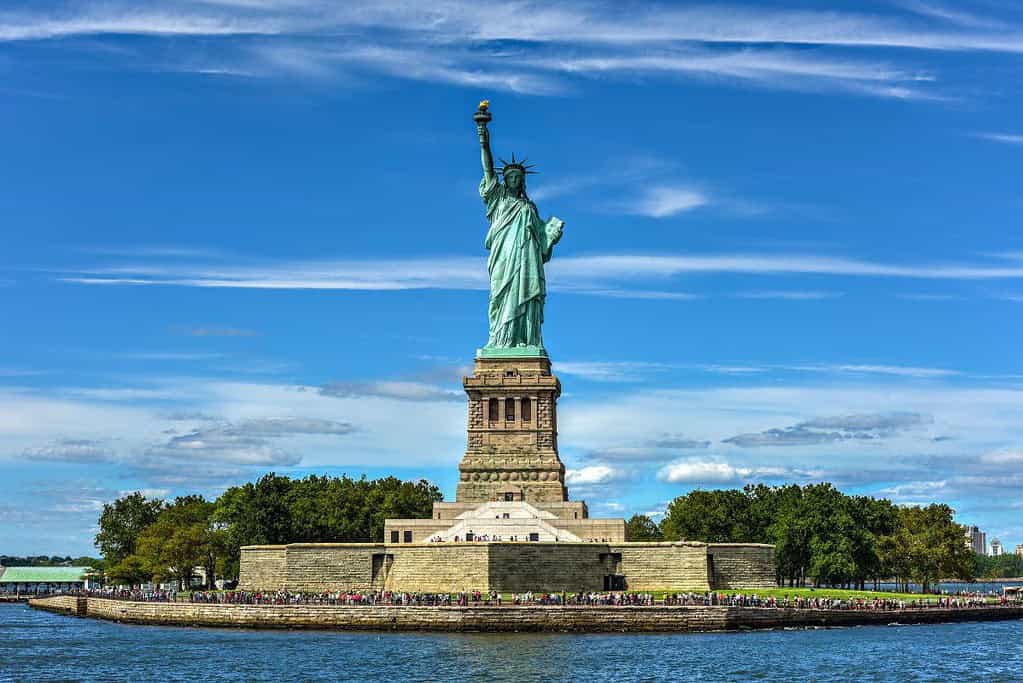
The Statue of Liberty is a UNESCO World Heritage Site in the United States. Standing tall on Liberty Island in the New York Harbor, this iconic monument has become a symbol of freedom and democracy. Designed by French sculptor Frédéric Auguste Bartholdi and dedicated on October 28, 1886, the statue represents Libertas, the Roman goddess of freedom. It serves as a powerful reminder of the historical and cultural significance of immigration to the United States, welcoming countless immigrants seeking a better life. The Statue of Liberty stands as a beacon of hope and a testament to the values of liberty, enlightenment, and human rights.
Taos Pueblo
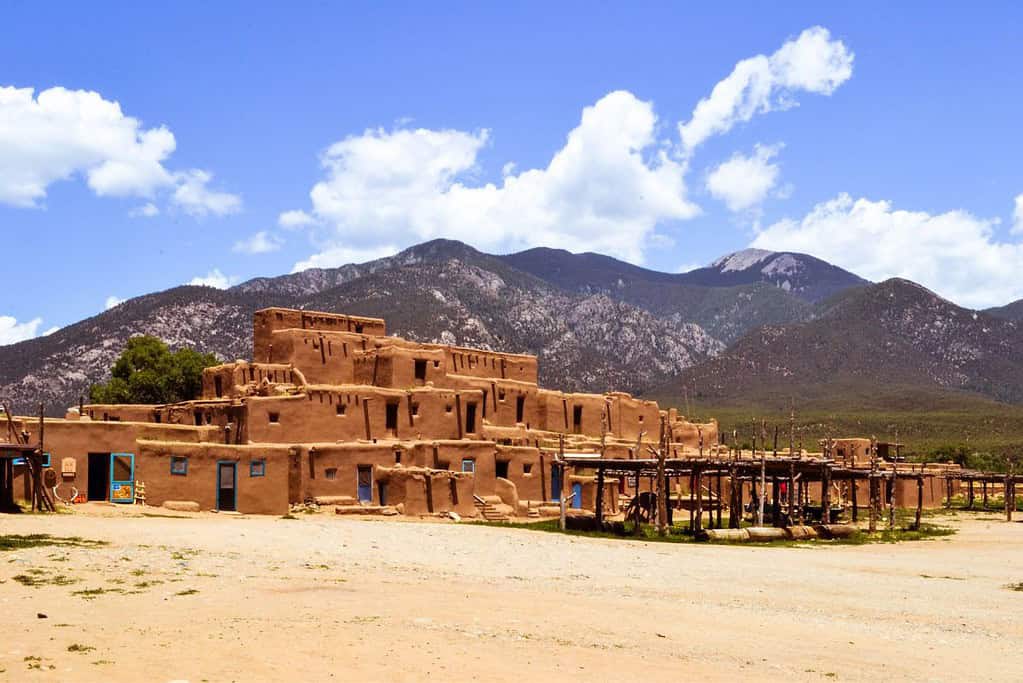
Taos Pueblo is a UNESCO World Heritage Site in New Mexico, USA. This historic Pueblo is a living Native American community continuously inhabited for over a thousand years. It showcases the Taos people’s remarkable adobe architecture and traditional way of life. The multi-storied buildings, made entirely of earth materials, are a testament to their ancestral techniques and cultural resilience. Taos Pueblo offers visitors a glimpse into the rich history, spirituality, and artistic traditions of the Native American people who call this place home.
The 20th-Century Architecture of Frank Lloyd Wright
The 20th-Century Architecture of Frank Lloyd Wright is a UNESCO World Heritage Site that showcases the exceptional architectural works of renowned American architect Frank Lloyd Wright. This site encompasses eight major works spanning different periods of Wright’s career, including iconic structures such as Fallingwater, the Solomon R. Guggenheim Museum, and the Unity Temple. Wright’s innovative designs, characterized by organic integration with the surrounding environment and a harmonious balance between form and function, have profoundly influenced modern architecture. Including his works on the UNESCO list recognizes their outstanding universal value and enduring significance in the field of architecture.
Carlsbad Caverns National Park

Carlsbad Caverns National Park, a UNESCO World Heritage Site in New Mexico, USA, is a natural wonder of extraordinary beauty. This remarkable park showcases a complex system of limestone caves adorned with awe-inspiring stalactites, stalagmites, and other unique geological formations. Visitors can explore the underground labyrinth through guided tours, marveling at the grandeur of chambers such as the Big Room, one of North America’s most extensive cave chambers. The park also offers stunning hiking trails and diverse flora and fauna, making it a haven for nature enthusiasts. Carlsbad Caverns National Park is a testament to the incredible forces of nature and serves as a captivating destination for those seeking adventure and discovery.
Everglades National Park

Everglades National Park, located in southern Florida, is a UNESCO World Heritage Site renowned for its unique and diverse ecosystem. Spanning over 1.5 million acres, the park is home to one of the largest subtropical wilderness areas in the United States. Its vast wetlands, including sawgrass marshes, mangrove forests, and coastal prairies, provide crucial habitats for many rare or endangered plant and animal species. Visitors to Everglades National Park can explore its enchanting landscapes, spot iconic wildlife like alligators and manatees, and learn about the delicate balance of this remarkable natural wonder.
Grand Canyon National Park

Grand Canyon National Park is a UNESCO World Heritage Site in the southwestern United States. It is renowned for its awe-inspiring beauty and geological significance. The park showcases the mesmerizing grandeur of the Grand Canyon, a massive gorge carved by the Colorado River over millions of years. The Grand Canyon’s majestic cliffs, vibrant rock formations, and breathtaking vistas captivate visitors worldwide. It is a testament to the Earth’s geological history, offering a glimpse into the forces that have shaped our planet over time.
Great Smoky Mountains National Park

Great Smoky Mountains National Park, located in the United States, is a designated UNESCO World Heritage Site. Nestled between Tennessee and North Carolina, this magnificent park is renowned for its breathtaking natural beauty and rich biodiversity. Spanning over 500,000 acres, it is home to lush forests, cascading waterfalls, and majestic mountains, including the renowned Great Smoky Mountains. The park is a haven for outdoor enthusiasts, offering many activities such as hiking, camping, and wildlife spotting. It also preserves the region’s cultural heritage, with historic buildings and exhibits that showcase the history and traditions of the Appalachian people. Great Smoky Mountains National Park is a cherished natural treasure, captivating visitors with its stunning landscapes and providing a sanctuary for countless plant and animal species.
Hawaii Volcanoes National Park
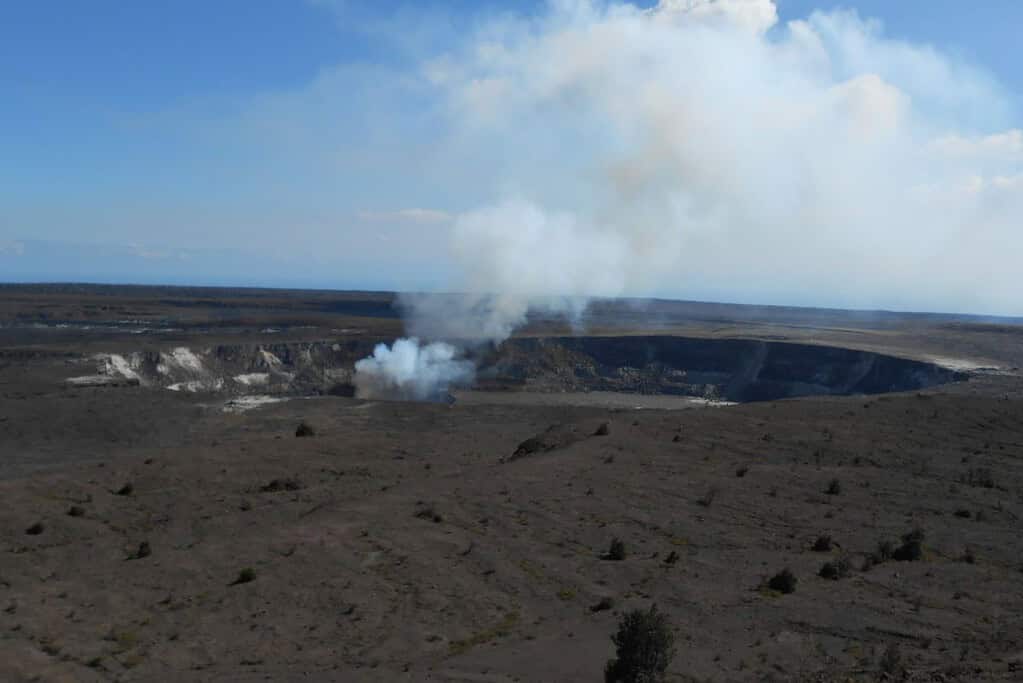
Hawaii Volcanoes National Park, a UNESCO World Heritage Site, is a mesmerizing natural wonder located on the Big Island of Hawaii. This park showcases the extraordinary power of volcanic activity and its impact on the landscape. Visitors can witness the awe-inspiring sight of active volcanoes, such as Kilauea and Mauna Loa, as they spew molten lava and shape the ever-evolving terrain. The park is also home to diverse ecosystems, including rainforests, deserts, and volcanic craters, providing a haven for unique plant and animal species. With its breathtaking scenery, educational exhibits, and numerous hiking trails, Hawaii Volcanoes National Park offers an unforgettable experience that captures the dynamic forces of our planet.
Kluane / Wrangell-St. Elias / Glacier Bay / Tatshenshini-Alsek
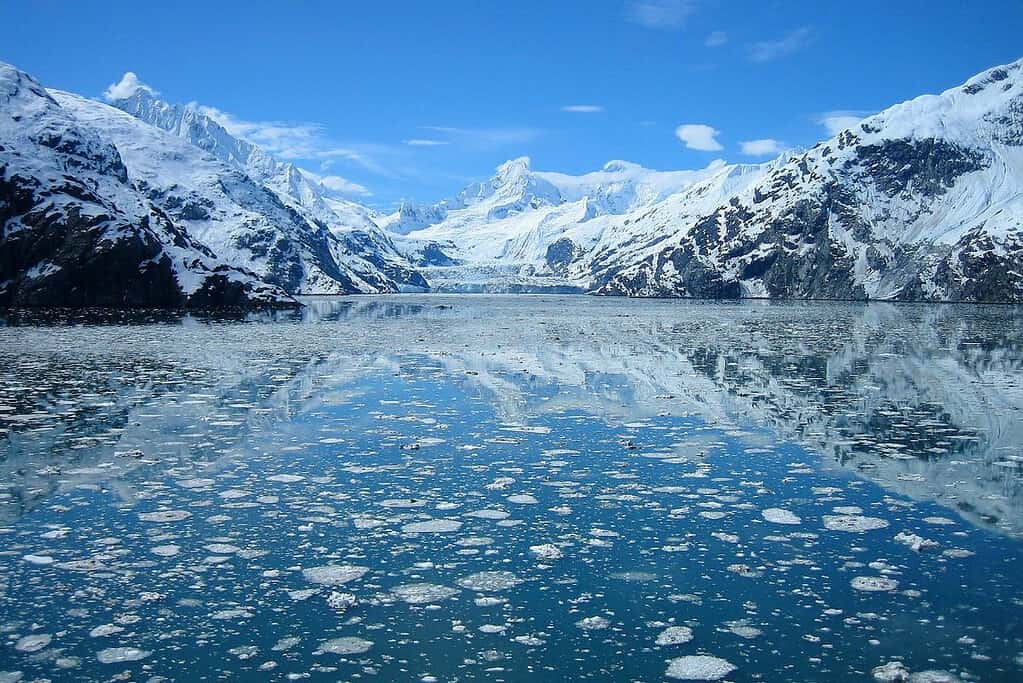
The Kluane/Wrangell-St. Elias/Glacier Bay/Tatshenshini-Alsek UNESCO World Heritage Site is a breathtaking natural wonder located in the northwest region of North America, spanning the borders of Canada and the United States. This vast and diverse site encompasses four national parks: Kluane National Park and Reserve in Canada and Wrangell-St. Elias National Park and Preserve, Glacier Bay National Park and Preserve, and Tatshenshini-Alsek Provincial Park in Alaska, USA. These parks showcase a magnificent and pristine wilderness of towering mountains, massive glaciers, and pristine waterways. The site is renowned for its exceptional biodiversity, with habitats ranging from coastal rainforests to icy peaks. It is a haven for wildlife, including grizzly bears, wolves, eagles, and rare species such as the mountain goat and the endangered Steller’s sea lion. The Kluane/Wrangell-St. Elias/Glacier Bay/Tatshenshini-Alsek UNESCO World Heritage Site is a true testament to the natural beauty and ecological significance of this remote and awe-inspiring corner of the world.
Mammoth Cave National Park

Mammoth Cave National Park, located in the United States, is a UNESCO World Heritage Site renowned for its immense underground labyrinth. It is home to the world’s longest-known cave system, spanning over 400 miles (643 kilometers) of explored passageways. This remarkable natural wonder showcases an extraordinary array of cave formations, including stalactites, stalagmites, and underground rivers. The park’s diverse ecosystems also provide habitats for various species, making it a significant site for ecological preservation. Visitors can explore its vast chambers, hike through the surrounding picturesque landscapes, and immerse themselves in the captivating beauty of this subterranean marvel.
Olympic National Park

Olympic National Park, a UNESCO World Heritage Site located in the United States, is a natural treasure that showcases the diverse ecosystems of the Olympic Peninsula in Washington state. Spanning nearly one million acres, the park boasts breathtaking landscapes ranging from glacier-capped peaks to ancient rainforests and rugged coastlines. Visitors can explore enchanting moss-covered forests, hike along pristine alpine meadows, and marvel at the stunning vistas from Hurricane Ridge. The park is also home to diverse wildlife, including Roosevelt elk and the elusive mountain goats. With its unparalleled beauty and ecological significance, Olympic National Park is a testament to nature’s awe-inspiring wonders.
Redwood National and State Parks

Redwood National and State Parks, a UNESCO World Heritage Site in California, United States, is a natural wonder of immense beauty and ecological significance. These parks are home to towering ancient coast redwoods, the tallest trees on Earth, and they provide a sanctuary for countless plant and animal species. The parks encompass a vast expanse of pristine forests, lush riverways, and breathtaking coastal landscapes, offering visitors a chance to immerse themselves in the majesty of nature. Exploring the trails amidst these ancient giants and witnessing the sheer grandeur of the towering redwoods is a humbling and awe-inspiring experience, making Redwood National and State Parks a must-visit destination for nature enthusiasts and adventurers alike.
Waterton Glacier International Peace Park

Waterton Glacier International Peace Park, a UNESCO World Heritage Site, is located in the border region between the United States and Canada. This unique park combines Waterton Lakes National Park in Canada and Glacier National Park in the United States, symbolizing the long-standing peace and friendship between the two nations. The park showcases breathtaking landscapes of majestic mountains, pristine lakes, and diverse ecosystems, making it a haven for outdoor enthusiasts and nature lovers. It is renowned for its abundant wildlife, including grizzly bears, elk, and mountain goats. Visitors can explore a network of hiking trails, go on scenic drives, and engage in various recreational activities while immersing themselves in the tranquility and natural beauty of this internationally recognized peace park.
Yellowstone National Park
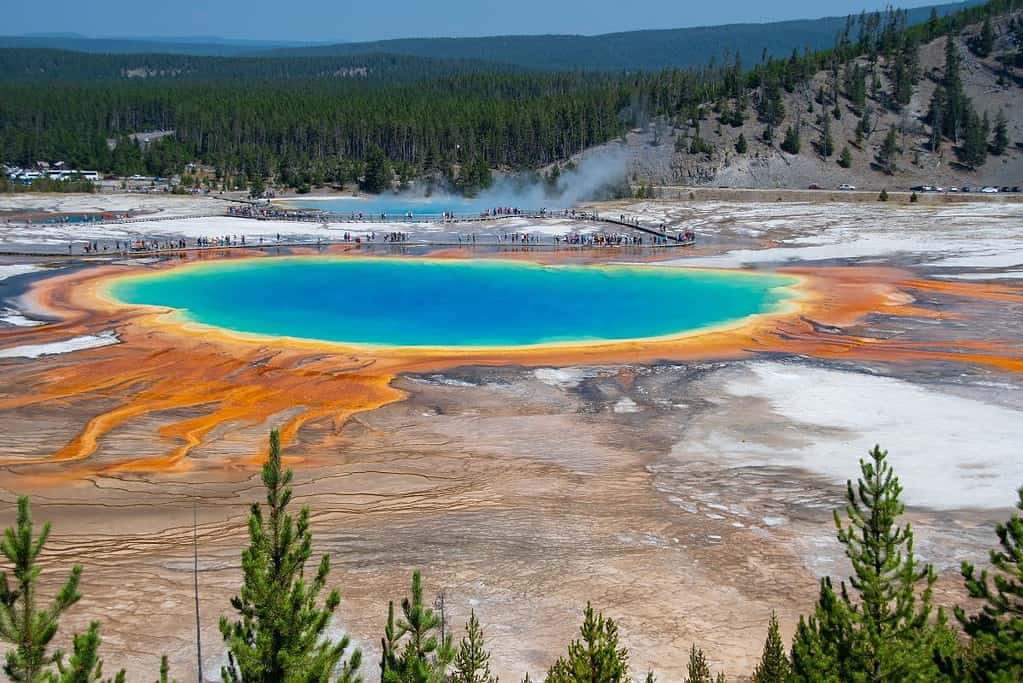
Yellowstone National Park, located primarily in the U.S. state of Wyoming, is a UNESCO World Heritage Site known for its exceptional natural beauty and geothermal features. Established in 1872, it was the first national park in the United States and is widely considered the first national park in the world. Yellowstone boasts diverse ecosystems, including majestic mountains, pristine lakes, dense forests, and vast grasslands. The park is renowned for its geothermal wonders, such as the iconic Old Faithful geyser and the colorful hot springs of the Grand Prismatic Spring. It is also home to a remarkable array of wildlife, including grizzly bears, wolves, elk, and the largest free-roaming bison herd in the contiguous United States. Yellowstone National Park is a testament to the preservation of natural landscapes and continues to captivate visitors with its awe-inspiring scenery and unique geologic features.
Yosemite National Park
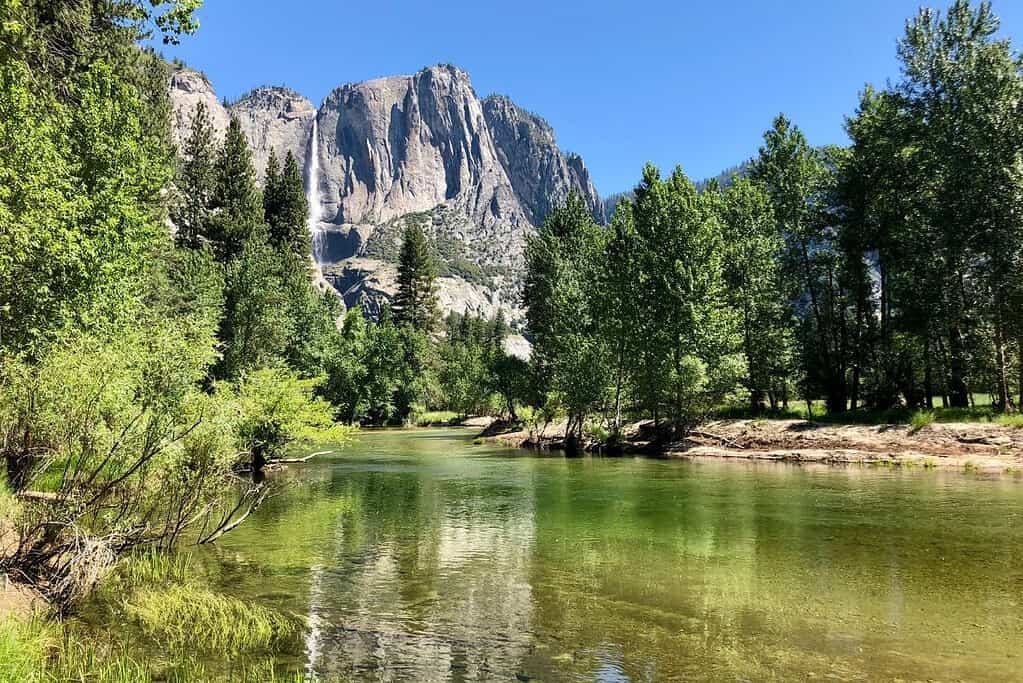
Yosemite National Park, located in California, is a UNESCO World Heritage Site renowned for its breathtaking natural beauty and ecological significance. This iconic park is characterized by its towering granite cliffs, magnificent waterfalls, pristine lakes, and lush meadows, creating a stunning landscape together. Home to diverse plant and animal species, including the majestic giant sequoias, Yosemite offers visitors a unique opportunity to connect with nature. Whether exploring its famous landmarks like El Capitan and Half Dome, hiking along picturesque trails, or admiring the stunning vistas from Glacier Point, Yosemite National Park captivates all who venture into its awe-inspiring wilderness.
Papahānaumokuākea

Papahānaumokuākea is a UNESCO World Heritage Site located in the Northwestern Hawaiian Islands. It is a vast marine and terrestrial area with significant cultural and ecological value. The site is named after Papahānaumokuākea, the Hawaiian deity of land and fertility. This sacred place encompasses a rich and diverse ecosystem, including coral reefs, seamounts, atolls, and unique marine species. It is a vital habitat for endangered species such as green sea turtles and Hawaiian monk seals. Papahānaumokuākea is a sanctuary for marine life and a cherished cultural landscape, holding great importance to Native Hawaiian traditions and ancestral heritage.
United States of America UNESCO tentative list
- Civil Rights Movement Sites
- Dayton Aviation Sites
- Hopewell Ceremonial Earthworks
- Thomas Jefferson Buildings
- Mount Vernon
- Serpent Mound
- Okefenokee National Wildlife Refuge
- Petrified Forest National Park
- White Sands National Monument
- Brooklyn Bridge
- Ellis Island
- Central Park
- Early Chicago Skyscrapers
- Pacific Remote Islands Marine National Monument
- California Current Conservation Complex
- Marianas Trench Marine National Monument
- Marine Protected Areas of American Samoa
- Big Bend National Park
- Moravian Church Settlements
Tours in United States of America
Our choices of tours in the United States of America are divided into thematic features such as New York City, Grand Canyon, and San Francisco Experience.
